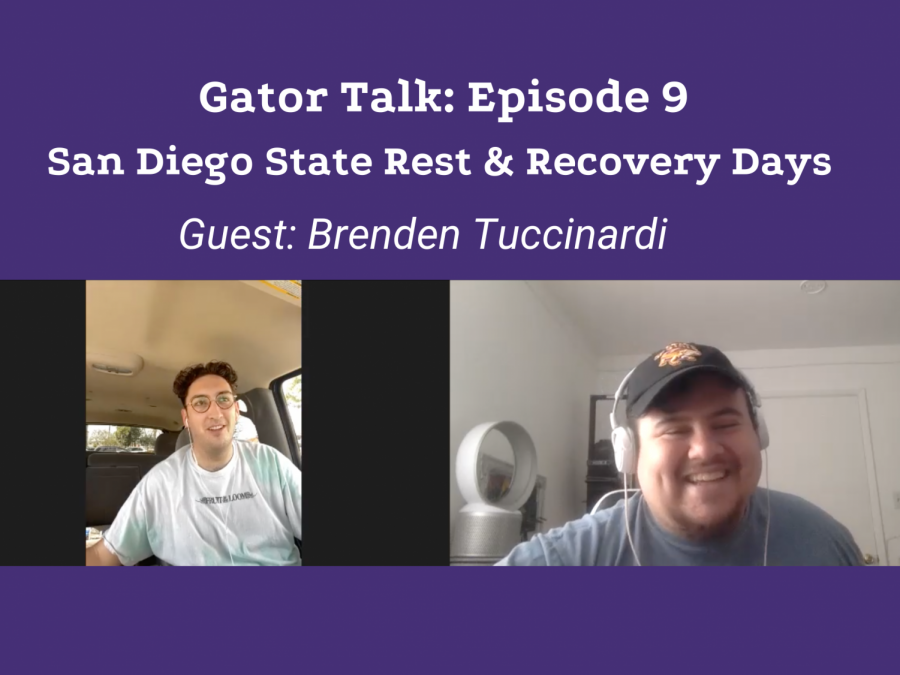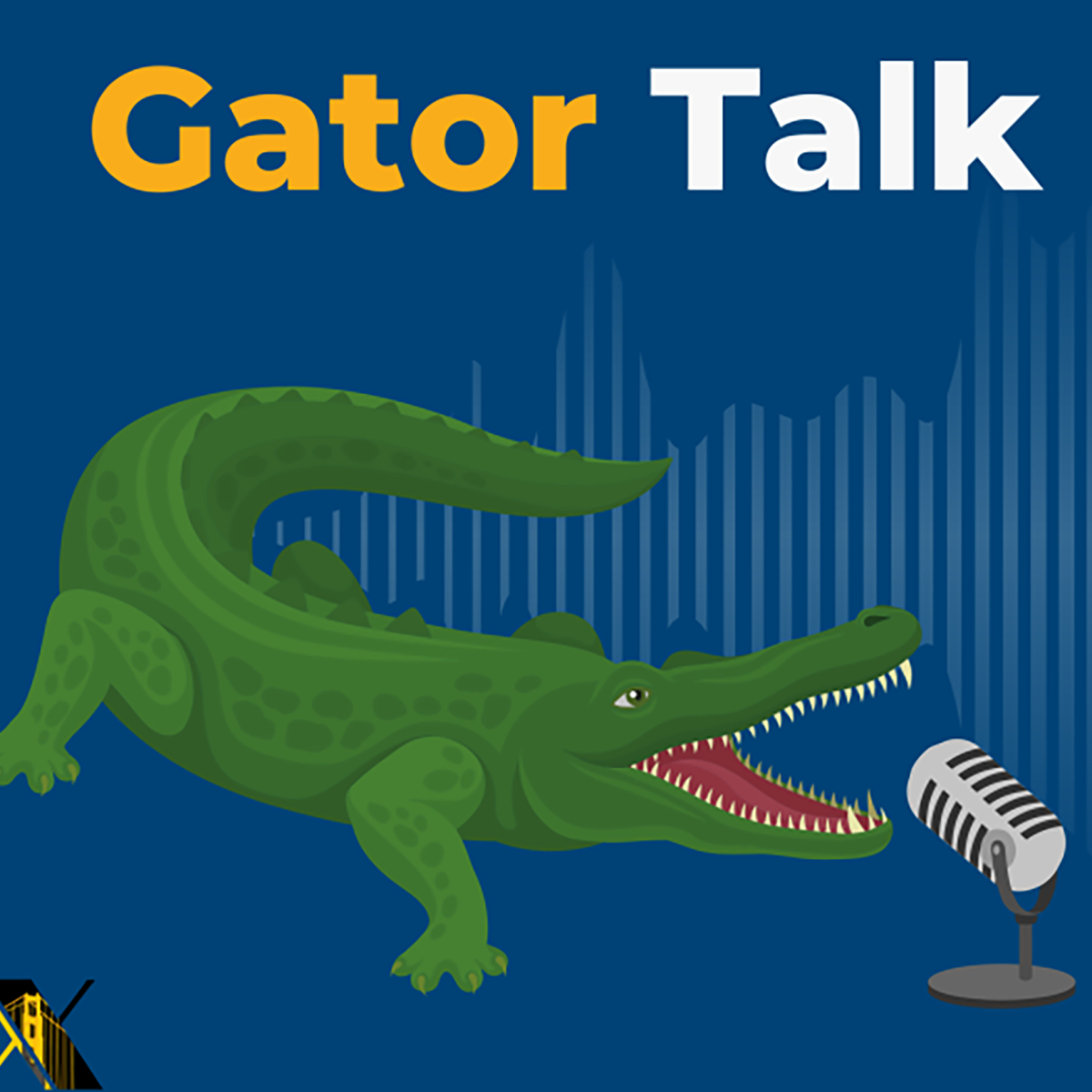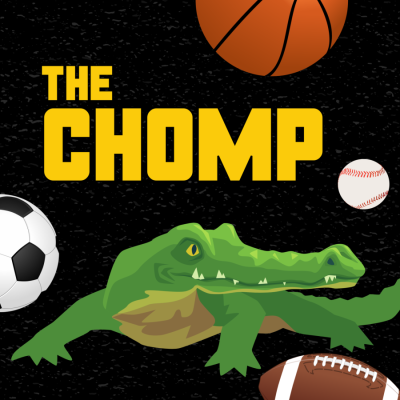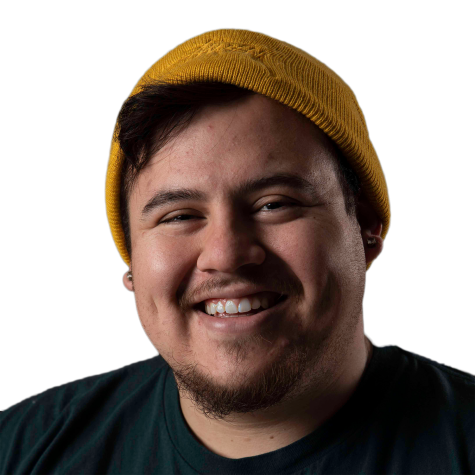Welcome to Gator Talk, a collaborative CalState podcast that brings city and statewide perspectives to SF State news.
In Gator Talk’s ninth episode, host Sebastian invited Editor in Chief of the San Diego State’s the Daily Aztec, Brenden Tuccinardi. Since most colleges held Spring Break this year, San Diego State was amongst the other half of colleges that did not. San Diego State held “Wellness Days” spread throughout the semester.
TRANSCRIPT:
Intro
*salsa song fades in*
Seb: This is Sebastian Mino-Bucheli, I’m your multimedia editor and your host for Gator Talk, a Golden Gate Xpress podcast that brings news to SF State students.
This is one of the three episodes of a triple header this week.
For more information/coverage, check out goldengatexpress.org OR @GatorTalkPod on all social media platforms.
Preview of the show
Seb: Here’s a quick preview of the show.
I’ll kick it off with a news brief, with news that matters to San Francisco State students!
We’ll head into the main story featuring a special guest, Brenden Tuccinardi, the editor in chief of the Daily Aztec, the student news publication of San Diego State University.
News Brief
Seb: It’s April 8th, so that means we’re 8 days into the baseball season! The Chomp Pod will provide you with amazing analysis for the San Francisco Giants and the Oakland Athletics, but this is your friendly reminder that the Los Angeles Dodgers were the 2020 World Series Champions.
I was away on a mini birthday vacation so here’s some late news.
The Suez Canal was liberated March 30th, Whoooooo. This 6-day-blockade provided by the cargo ship, the Evergreen has created traffic in the international sea trade. The aftermath of the blockade still has traffic in the canal backed up.
How does this affect you? Fellow SF State Gator? I don’t know but I’ve been thinking about this blockade a lot.
With Spring Break coming to an end all over the U.S., I hope you got some much-needed rest, stayed socially distant and that you didn’t go to Florida.
Here’s some Spring Break news: The city of Miami went into a state of an emergency as the city saw an influx of maskless party goers.
Across the nation, Spring Break wasn’t held in every U.S. college.
National Public Radio reported that a majority of colleges across the U.S. canceled Spring Break and instead replaced it with “Wellness days.” A California State University is participating these days. It’s San Diego State. Their next Wellness Day is April 15.
That’s it for the news brief. We’ll head on over to the main story.
Main Story
Seb: So I’m here with Brenden Tuccinardi, you’re the editor in chief for The Daily Aztec, and just for the listeners of Gator Talk, I wanted to get your perspective on San Diego State not having Spring Break this year.
How have you guys been doing about just dealing with the pandemic, overall?
Brenden: I just kind of, I think, for me it’s been giving myself some grace and giving my team a lot of like my team the ability to have flexibility because it’s really just so much change has happened in the past year, even in the past six months. I think back in December, I didn’t think we would be where we are today because it was looking pretty bleak. So just kind of having that sense of like self-forgiveness and taking a step back and realizing like, we’re all going through something that’s truly life-changing. We’ll remember it for years to come. So, being able to take a step back and kind of just take pause I guess that’s how I, I’ve really been dealing with and hopefully my staff has kind of felt the same way that they have that opportunity.
Seb: If you could provide a little like perspective to it like how, how do we even come to be, you know?
Brenden: So I think it really stems from the fact that since August, SDSU has had a very bad experience in terms of COVID-19 cases associated with the campus. Last I checked, first semester, there are over 2,000 associated with SDSU, and so, I think, looking back, the real reason why Spring Break was even was an issue was because of that, all eyes are basically on the school, especially in San Diego County, because for a while the SDSU cases were threatening the county’s status in the red tier. So it’s really interesting to kind of see that dynamic play out in the lives of students, I think that was kind of the biggest issue that a lot of students had is, why are we essentially being punished, even though it’s not a punishment or like why are we having to pay for the mistakes of administrators who didn’t expect things to be as bad as they would be.
So that’s kind of like the broad context, I guess, the more specific context would be like the decision to cancel spring break was made by the University Senate, which is made up of faculty, staff, and a few student representatives, and they actually tried to do it twice. So the first time, Associated Students, which is CSU student government, was able to convince senators to vote against removing the spring break and kind of urge them to come up with a compromise that would give students the ability to have a break during this semester. So that was back in November. And then at the next Senate meeting, the University came to the table with this proposal to offer rest and recovery days that would be separate, but it would essentially be the same amount of time as a spring break just split up into different days so it’s not nine consecutive. It’s five spread out plus Cesar Chavez Day which we already get off and then they included the weekends in that too and so they viewed it as an equal, like trade for trade, but I think a lot of students didn’t and so that’s really where the real sticking point is here. The university said that he was supposed to, we’re still giving you the same amount of time off. It’s not spring break. Here we go.
Seb: What essentially is like this student’s reaction to, like, coming back from rest and recovery day?
Brenden: I mean I can only really speak to my own experience, specifically for me they did nothing. I mean it was basically just kind of a three-day weekend so much like how Labor Day or Memorial Day is, where it’s like you, you’re still thinking about school. I know a lot of students still have to work like it’s not a true break from school, or having to think about school it’s kind of just a tease on those that’s what it really felt like an extended Sunday, if you will, and so like I think a lot of students are disappointed in the fact that it’s not doing what they want it to do in terms of relief and for schoolwork, but also mental health. The past few weeks, it’s, it’s, for me it’s been daunting to think I have to keep doing what I’m doing without a break, it’s like 16 weeks of uninterrupted instruction is not okay, it’s really hard. And like those, the nine consecutive days they make a difference. I think I definitely am glad we have the rest and recovery days. I’d rather have those than none. I think that’s an important distinction is this is a good, it’s a good compromise but it could be better.
Seb: Do you know if there was any pushback this semester to restore spring break?
Brenden: So before winter break, Associated Students sent a letter to sec President De La Torre about, like, essentially demanding Spring Break be reinstated and I haven’t heard any, like, I didn’t hear anything back about that. She was supposed to respond by the end of the week and she didn’t. So it was kind of, it just seemed like the decision was final, regardless of how many students said they didn’t like the decision and how many over 15,000 people signed the petition. So the blowback was huge, but I think eventually, students were just kind of just “okay well they’re not going to change their mind, we just have to live with it,” but it is kind of resurfacing now.
This past week we’ve been doing a session of associate student elections and those voting starts next week and that’s kind of become a big thing in the campaigns. How are candidates going to ensure that student voices heard, because obviously, the spring break decision is an example of students being ignored. And so it’s interesting to see that dynamic. Now, at this point, I think it is what it is, they’re obviously not going to give us back spring break. We’ve had a couple rescue recovery days already, just be kind of pointless at this point but, yeah.
Seb: So I’m also here to change that org, or I mean, not your but the change that or to bring back Spring break at San Diego State. 16,003 Aztecs have signed up, the goal for 25,000. And I have one here, someone saying,
“R&R days will absolutely do nothing to actually give students a break from school. Do they actually care about making a solution for COVID cases? No, they did, they will close down the dorms, but they will never do that because they will lose too much money for a second year, all they care about is money, and their image that makes it seem like they’re doing this for the greater good of society. And then they finish off by saying, but in reality they are screwing over each and every student.”
It brings back a lot of the, I would say like COVID shaming. That happened, like last year, where certain universities across the United States, including San Diego State had like, or even UCSD, as they had a lot of house parties and stuff.
Would you say it’s just because of the lack of strict COVID restrictions or rather just like, this is kind of how it was, like there was no emphasis to keep students safe, you know, it was just like, like go, or be on your own?
Brenden: I think there’s kind of a two-part answer to this, I think, for on-campus students. I think there are key things that point to why the surge in cases occurred at SCSU. One is that the university didn’t require students to test negative before they moved in, and then they didn’t require students to get tested until several weeks into the semester when they started their surveillance testing program and I’d like those are lessons they learned quickly they adjusted so props to the university for that but I think in terms of the off-campus population there.
During my reporting it, I kind of discovered that the university’s hands were tied like they don’t have much control over students living off-campus in the college area. And I think that was kind of the biggest frustration was like hear universities being blamed for students, they can’t control, but they do control in a way and so I think the solution they found was, okay, we’re just going to start writing students up and they’ve issued, I don’t know the exact number but I know it’s like over 2000 Disciplinary notices to students and so, I think, I don’t know if necessarily that was the right approach either because then it’s like, very heavy-handed, I think, like I mentioned earlier, like there’s no guidebook, there’s no rulebook, this is unprecedented times and I think if you obviously there are some universities that handled it better than others. So, and I don’t, I wouldn’t feel comfortable giving a definitive like grade I guess SDSU but I just say like, there’s a lot of information out there. And I think it’s just too worth it what you will.
Break
Seb: We’re going to take a quick break.
Support the Golden Gate Xpress’ work by signing up for our online newsletter, following us on Instagram or Twitter @ GGXnews, and visiting the website: https://goldengatexpress.org
Interested in advertising with GGX? Check out our advertising page on goldengatexpress.org/advertising.
*break ends*
Main Story cont.
Seb: It’s strange to hear that yeah like students were even given an option to have COVID tests or like mandatory weekly tests. That’s something I came across, earlier this semester when students were moving in how they’re gonna have a mandatory COVID testing and I’m like wait, this is really good, like, why is this barely happening now, you know, when last semester students were just told to go home?
Brenden: Yeah. I think what’s been really interesting to see is comparing SDSU his plan to UCSD and, obviously, each university they have completely different resources at their disposal, the UC system has a lot more funding than the CSU and also more access to medical experts, just the fact that they have a medical school on campus. But what shocked me the most is like why wasn’t that information kind of shared like they’re developing these plans at the same time, and currently with the county with the state. Why wasn’t there some overlap, or general, like, here’s how colleges are gonna open universally like they have to test students before they can move in on to campus, they have to have surveillance testing programs like looking back now, that just kind of seems like common sense, but I guess it wasn’t at the time, and I’m no expert either like I won’t pretend
Seb: And just to close off like I wanted to ask, what’s something that you wish the other CSU around California could know about just the R&R days, just, you know, something that our listeners, even as a state, could listen to?
Brenden: I think the lesson I’ve learned is really just to lean into them. Like, as hard as it is to kind of drop school and thinking about it for a day because it’s not nearly enough. They’re meant to be for rest and recovery so make sure to take advantage of it. I’ve struggled with it, I think, for the next one I’m definitely going to really buckle down and just like not look at Canvas, not even looking at my email, and just truly have a day of rest and recovery. Obviously, obviously, that’s not a nine-day spring break, but it’s what we have. So, that’s my advice is just really take advantage of them as best as you can, because it’s all that we get.
Seb: I’m going to try to make this sound less self-serving but to the non-journalists listeners who may not understand it, What are you guys gonna be changing? Are you guys tired of the COVID angle like something plus COVID equal story, as we get close to reopening?
Brenden: I hope so, I am kind of tired of the COVID angle I think, but it’s so hard to escape because it’s literally what we hear about all day every day, and it’s kind of just that cycle like the COVID angle breeds the COVID angle. So, I think, like we’re covering men’s basketball right now, and I wish we could just cover it as men’s basketball but it’s like, last year they weren’t able to go to the tournament and so that’s something we have to address this year. There are a bunch of COVID product protocols that the team has to follow and that’s something we have to address and so I think it’ll, it’ll be a while before the COVID angle goes away, but I’m definitely I, it’s something I think about a lot is like how can we kind of move beyond it because it is getting tiring, like obviously, things are virtual we don’t need to acknowledge that there actually, but that’s a good question. Honestly, I like that question.
Seb: We’re at the end of the interview, this is your spot to plug anything going on in your life.
Brenden: Follow me @Brenden_Tucc on Twitter, Instagram, also follow the Daily Aztec it’s @Daily Aztec on Twitter and Instagram and I’m actually heading out to Indianapolis tomorrow to cover the NCAA Tournament and so that’s really exciting. And so just keep an eye out for that coverage. And then just keep an eye out on the deal yesterday. I think we have a lot of good plans. A lot of good things are coming up and it’s exciting to be assumed a journalist right now and I know like the Xpress has done great work, I know Jun, the photo editor. Just student journalists, follow us student journalists, that’ll be the best thing you can do for yourself these days because the perspectives are so fresh and it’s kind of been so fun to watch us all evolve and grow in this time and really learn, that’s been the best part of the learning experience has been amazing.
Seb: Brenden also got a chance to tell me that there’s this new student fee that goes towards increasing mental health services on campus, as well as funding identity centers on campus.
At the time of this interview, The Daily Aztec was focused on covering the San Diego State University Men’s Basketball team as they made it to March Madness.
End
And that was the episode.
This was Sebastian Miño-Bucheli, multimedia editor from the Golden Gate Xpress and your host for Gator Talk.
New episodes will premier Friday mornings so stay tuned.











